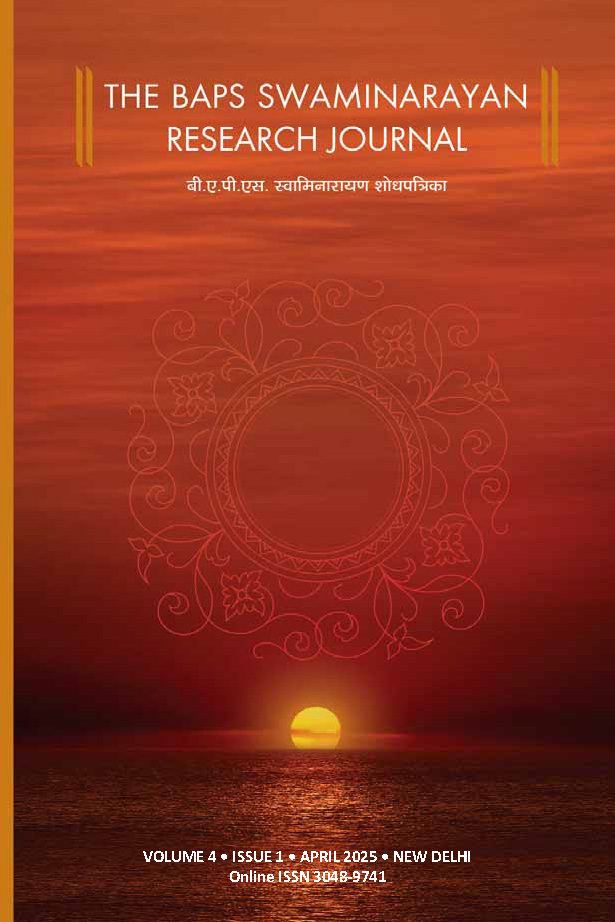Abstract
This paper traces the practice of ahiṃsā by Bhagavān Svāminārāyaṇa’s (henceforth, Swaminarayan) ascetics in the Svāminārāyaṇa Saṃpradāya’s (Swaminarayan Saṃpradāya) sources and analyzes it through Swaminarayan’s exposition of ahiṃsā. It is divided into two primary sections. The first raises a discussion of the existing theories on religion, asceticism, and ahiṃsā. The discussion then examines historically documented instances of Swaminarayan ascetics practicing ahiṃsā and analyzes their significance in shaping the principles of Swaminarayan asceticism. In the first section, I highlight that existing theories on religion and asceticism overemphasize the role of ideologies and institutions in identifying the ascetic self. Thereafter, I argue that the dialectic between the inherent ascetic self and the outer ascetic individual is central to creating Swaminarayan asceticism and the Swaminarayan ascetic culture. By extending the discourse of asceticism to ahiṃsā, I argue that ahiṃsā is not merely a culturally constituted practice but a lived ethical practice exercised by the ascetic subject through the medium of the above-mentioned dialectic. In the second section, I argue that while the ascetic practice of ahiṃsā was integral to forming Swaminarayan asceticism, it was not an end in itself but a means to achieve a larger devotional goal.

